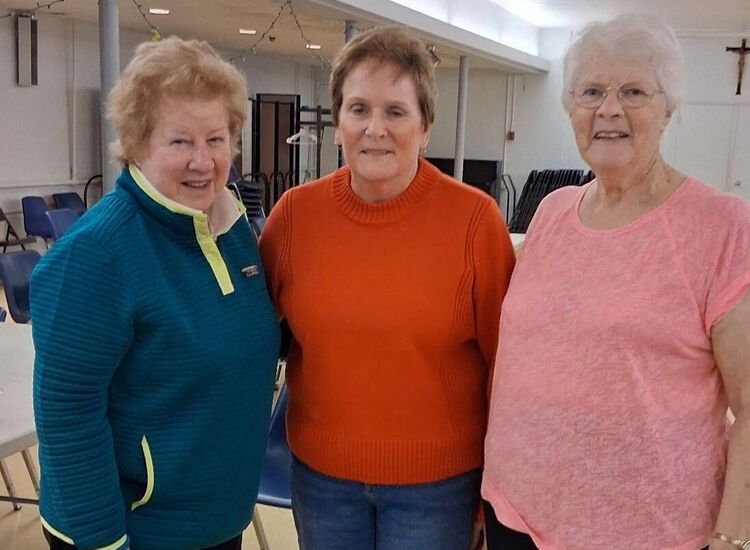There was a fire overnight in an electrical sub-station, and now there's news of a chlorine leak at a water facility.
When you are the commissioner of police in a city like Yonkers, you are expected to have an input into all manner of occurrences and happenings. That means a lot of showing up in odd spots at odd hours.
Hartnett has dealt with quite a few such situations. Many of them, of course, have little to do with fire and water, but rather with the human element and its capacity for crime.
Hartnett, a fit looking 54-year-old, is in his office, squeezing in an interview on a weekday that is bright and clear, though yet to fully play itself out.
His office, upstairs and in a corner of his department's headquarters overlooking the Hudson River, is adorned with photographs, awards, and neatly arranged flip files that tell a good deal of the story of this city of a quarter of a million people, the fourth largest in New York State, and likely the third biggest after the next census.
Yonkers, a conurbation that embraces gritty urban streets and leafy suburban ones, is a border town. And, like all such places, it has to take account of its next door neighbors. In the case of Yonkers, the biggest neighbor is, of course, New York City.
Where one city ends and the other begins is often of little account. A crime that starts in one can often end in the other. This isn't old time Dodge with an endless, empty prairie beyond the livery stable. No sir.
Hartnett is an up-to-the-minute chief of police. Literally. His Blackberry, a tool he considers indispensable, is far more visible, and, thankfully far more used, than his gun.
If he is asked to describe the streets that his department polices, and the manner of its daily and nightly work in terms of a TV cop show, Hartnett doesn't hesitate.
"The Wire" is one of the most authentic police shows ever, he says, referring to the HBO series set in Baltimore.
Exactly three years since Mayor Phil Amicone gave him his job, Hartnett says he is "having a ball" running what he says is "a great police department."
As is the case with most police chiefs in major cities, Hartnett serves at the pleasure of the mayor. He envisages himself doing just that for the remainder of Amicone's current term.
As well as the mayor, Hartnett serves the people of Yonkers and, though he might be in charge, he also serves those around him in his department. These duties make up fun side: where he goes to work, and the men and women he works with.
What the work results from, or is directed at, does not generally qualify as being fun; anything but.
Right now, on this fair fall morning, there is a gun murder that's new to the ledger and just a few nights before there was what amounted to a riot on one street that led to ten arrests.
Yonkers, Hartnett's daily and nightly brief, is a big city and in some ways a small town too. It nudges right up against the Bronx, is 18 square miles in area, and is home to a quarter of a million people.
"Imagine how Yonkers would rank in, say, Kansas," Hartnett muses.
Only this ain't Kansas.
Sometimes, he says, Yonkers is referred to as New York City's sixth borough.
"And this has pluses and minuses. One of the latter being that New York City is the number one terrorist target in terms of our cities and its northerly evacuation routes run through Yonkers."
Not surprisingly, and given his own past with the NYPD, where he held the rank of deputy chief, Hartnett is a fan of NYPD Commissioner Ray Kelly and says his fellow Irish American is doing "a great job."
Asked is he would be ever interested in returning the few miles south to One Police Plaza in Manhattan, Hartnett demurs. He is entirely focused on his present job.
Still, he concedes when pressed, it would be nice to be even considered at some point in the future.
What is the toughest issue facing Yonkers in terms of crime right now? Hartnett doesn't hesitate. "Gangs and guns are our biggest problem right now," he says.
Hartnett doesn't like to name gangs because they tend to revel in the notoriety that publicity brings.
"There are twenty to twenty five gangs in Yonkers. Some of them amount to no more than five knuckleheads on a street corner."
But, as he is quick to add, even a knucklehead can pack a gun.
The biggest gang is a Mexican outfit with anywhere between 50 and 70 members. Gangs like this, he says, prey on their own people, most especially undocumented immigrants.
Often, says the Brooklyn-born Hartnett, you can spot the gang member in a crowd of day laborers. He's the guy with loafers and jeans that don't look like they are being worn for manual work.
"Gangs are both fascinating and troubling," Hartnett says.
"More guns have been taken off the streets so far this year than all of last year. The officers are doing a great job, but that could be because there are simply more guns out there on those streets."
Where do the guns come from? Hartnett says there is actually a gun manufacturer in Yonkers but none of the illegal weapons seized by his officers come from that company.
"They are coming from down south and winding up on our streets," he says. In this he voices an identical complaint to Commissioner Kelly and Mayor Michael Bloomberg next door in New York.
"Just one gun we have processed was involved in at least six shooting incidents. This shows how just one gun can cause tremendous tragedy," Hartnett adds with emphasis.
What is the best thing about his job?
"The cops themselves," he says.
And the most challenging thing about the job right now?
"The budget crisis," he replies.
Statistics and figures play a central role in Harnett's work both in terms of the budgets and what it is used for. The now tried and tested CompStat crime tracking system shows where crimes are being committed and to what intensity.
Yonkers is a patchwork quilt. Some parts are relative hot spots while much of it is more suburban and less likely to show up on the stat sheets.
"You have to immerse yourself in the CompStat figures, keep an eye on them every day. You always have to proactive and reactive," Hartnett says.
Hartnett is placing great hope in a new technology call ShotSpotter, which allows police to pinpoint where a gun is actually fired.
How many officers are there in the Yonkers department right now?
"Well, we're about twenty-five short right now. The full complement should be six hundred and fifty, but we're in the low six twenties.
The department, he argues, should be significantly bigger.
"Ideally, the number should be as high as eight hundred officers on top of supervisors and civilian employees, the number of whom right now is drastically low."
Hartnett says the next census will show Yonkers has at least a quarter of a million residents and in addition there is a significant undocumented population. Hartnett reckons the city will move from fourth largest in New State to third largest, moving ahead of upstate Rochester.
Yonkers, he points out, is currently applying for funds to cover fifty more officers out of the state's share of the stimulus package.
"If I got fifty cops from the stimulus money that would help beef up my four precincts, my gang unit, and help in policing our schools," he says.
What about relations with the city's Irish immigrant population?
"I almost declared absolute victory," says Hartnett with a smile.
"There was one full time officer foot patrolling on McLean Avenue and he was taken off. But the merchants wanted him back. And he's not Irish, but Italian."
There is also, of course those Irish who are undocumented and likely to remain uncounted in the census.
"We work very well with the Aisling Center on McLean Avenue. If there are any problems we hear of we just go to Orla (Kelleher) and the Aisling Center," says Hartnett, whose own Irish roots are in counties Kilkenny and Limerick.
"There's still a significant undocumented Irish population on the east side of town, but with regards to the undocumented Irish, the problems are microscopic."








